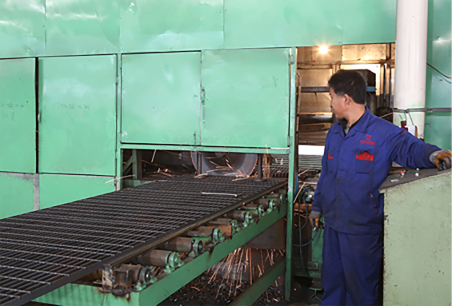The Importance of Heavy-Duty Construction Fencing
In the world of construction, safety and security are paramount. Heavy-duty construction fencing has emerged as an essential component in safeguarding construction sites, ensuring both the protection of workers and the integrity of ongoing projects. These robust barriers serve various practical purposes in a construction environment, and understanding their significance can greatly benefit contractors, workers, and stakeholders alike.
Understanding Heavy-Duty Construction Fencing
Heavy-duty construction fencing typically consists of strong materials such as galvanized steel, aluminum, or reinforced plastic. Unlike standard fencing, heavy-duty options are designed to withstand the rigors of outdoor elements and the potential impact from equipment or debris. They are often taller and sturdier, reaching heights of 6 to 8 feet or more, which serves to deter unauthorized access and provide a secure site perimeter.
Construction sites are often cluttered with hazardous materials, heavy equipment, and various activities that pose risks to bystanders. Heavy-duty fencing creates a physical barrier that keeps unauthorized personnel at a safe distance, thereby reducing the risk of accidents and injuries on-site. This is particularly crucial in urban areas where sites are often adjacent to public sidewalks or roads.
Safety and Liability
Implementing heavy-duty construction fencing is not just about safety—it also plays a critical role in legal compliance. Many jurisdictions require construction sites to be secured adequately to protect the public and the environment. Failure to adhere to these regulations can lead to hefty fines, project delays, and increased liability for contractors. A properly installed heavy-duty fence demonstrates a commitment to safety, reducing liability exposure and fostering a safer working environment.
heavy duty construction fence

Moreover, a secure construction site deters theft and vandalism. Construction materials and equipment are valuable assets that can attract opportunistic criminals. By enclosing the site with heavy-duty fencing, contractors can mitigate these risks, ensuring that their investments remain intact throughout the duration of the project. This added layer of security frequently translates to lower insurance premiums, as insurers recognize the reduced risk profile of a well-secured site.
Versatility and Applications
Heavy-duty construction fencing is versatile and can be tailored to meet the unique needs of different projects. It can be used for both short-term and long-term applications, making it suitable for everything from residential renovations to large-scale commercial developments. The adaptability of these fencing solutions means they can be easily modified or expanded as the project evolves.
In addition, some heavy-duty fencing options come equipped with features such as wind-resistant designs or noise-attenuating panels. These features can enhance the effectiveness of the fencing while addressing specific challenges posed by the construction environment. For instance, in urban settings, noise pollution control can be an important consideration, and specialized fencing can help keep the peace with nearby residents and businesses.
Conclusion
In conclusion, heavy-duty construction fencing is a vital component of successful project management and site safety. Its ability to provide security, comply with legal standards, and protect both workers and the general public cannot be overstated. As construction projects become more complex and the emphasis on safety intensifies, investing in quality heavy-duty fencing is a wise decision for any contractor. By prioritizing the security of their sites, contractors can foster a culture of safety, reduce liability risks, and protect their assets, ultimately leading to smoother and more efficient project execution. Heavy-duty construction fencing not only erects a physical barrier but also builds trust and confidence among workers and stakeholders alike.
-
Why Galvanized Trench Cover Steel Grating Resists Corrosion
NewsJul.10,2025
-
The Versatility and Strength of Stainless Expanded Metal Mesh
NewsJul.10,2025
-
Load Calculations in Steel Grating Platforms
NewsJul.10,2025
-
Keeping Pets and Kids Safe with Chicken Wire Deck Railing
NewsJul.10,2025
-
Hole Diameter and Pitch for Round Perforated Metal Sheets
NewsJul.10,2025
-
Aluminium Diamond Mesh in Modern Architecture
NewsJul.10,2025
Subscribe now!
Stay up to date with the latest on Fry Steeland industry news.

